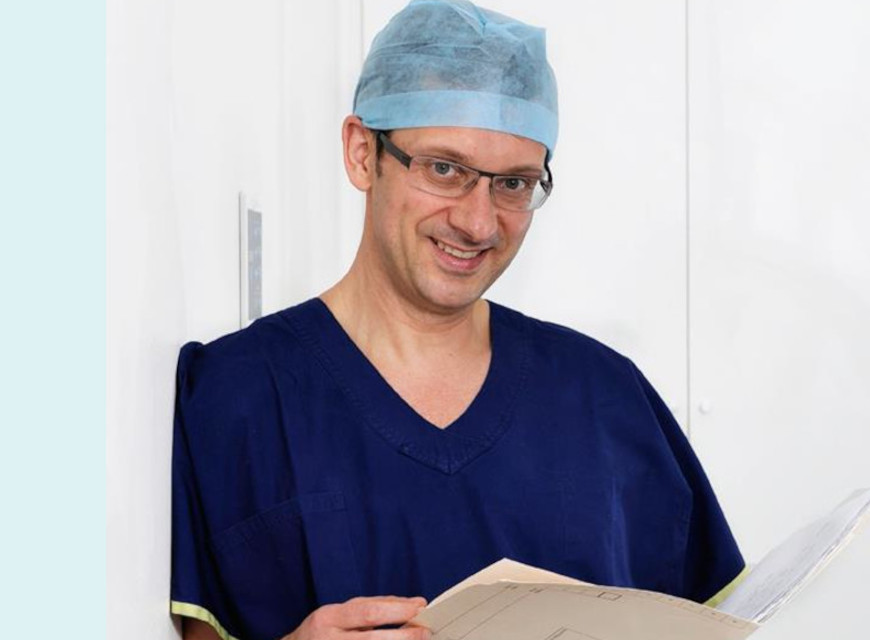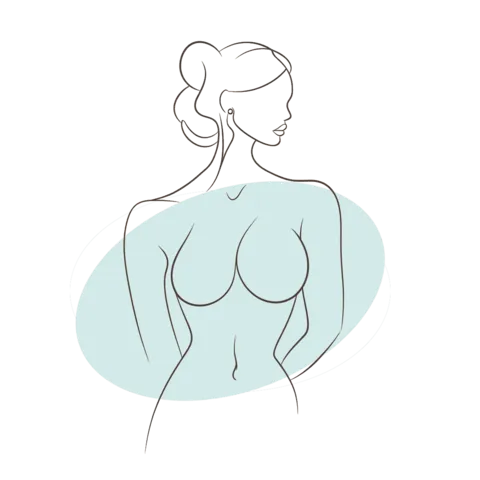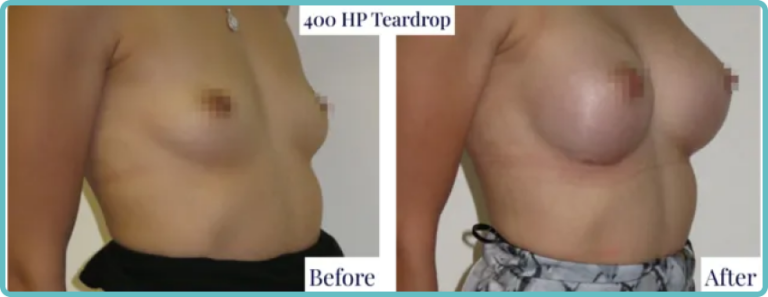
A Guide to Resuming Exercise after Breast Augmentation
If you’re considering breast augmentation (augmentation mammoplasty), understanding the exercise timeline after the procedure is important to encourage an uneventful smooth recovery. Sydney Plastic Surgeon Dr Mark Kohout emphasises the importance of following post-operative guidelines to foster optimal healing. Knowing when and how to reintroduce physical activity is a key aspect of breast augmentation recovery, as it helps to maintain your overall health while protecting your surgical results.
Your exercise timeline after breast augmentation will progress through several stages. You’ll start with a period of rest, gradually reintroducing light activities, and eventually returning to your normal fitness routine. This blog will guide you through what to expect at each phase of recovery, from the initial weeks of limited movement to the point where you can fully resume exercise after breast enlargement.
First 2 Weeks Post-op
During the first two weeks after breast augmentation, rest is important for your recovery. Your body needs time to heal, and adequate sleep plays a vital role in this process. Aim for at least 8 hours of sleep per night, as this helps with healing and pain relief.
To promote proper rest:
- Sleep on your back with your upper body slightly elevated.
- Use pillows to maintain this position and manage swelling.
- Wear a supportive bra while sleeping to hold your breasts in place and ease tension on your incisions.
This sleeping position helps manage fluid build up, encourages circulation, and helps kees your breasts in a neutral position as they heal. It also assists you to get out of bed without straining your chest muscles.
Managing Pain and Swelling
It’s normal to experience pain and swelling during the initial recovery period. The first three to five days are typically the most uncomfortable. In many cases, the pain is most severe in the first few days but should gradually subside.
To manage pain and swelling:
- Take prescribed pain medication as directed by Dr Kohout.
- Apply cold packs to swollen areas, being careful to wrap them in a cloth before placing them on the skin or incisions.
- Stay hydrated by drinking plenty of water throughout the day.
- Eat a balanced diet rich in vitamins and lean proteins to support healing.
You may notice that swelling peaks around three to four days after surgery. Some patients experience swelling for up to three months, and it can take up to six months for the implants to fully settle.
For detailed guidelines on what to expect and how to care for yourself in the weeks following surgery, see our full Recovery After Breast Augmentation: Guidelines for Healing after Implants article.
Gentle Movements to Maintain Circulation
While rest is important, gentle movement is also crucial to maintain circulation and prevent blood clots. However, it’s essential to avoid overexertion during this period.
Here are some guidelines for gentle movement:
- Take short, leisurely walks within your home.
- Perform gentle arm exercises, but avoid raising your arms above your head.
- Move around regularly throughout the day to prevent stiffness.
Avoid any activities that involve lifting, pushing, or pulling. It’s also important to steer clear of cardio exercises that elevate your heart rate, such as neighbourhood walks, stair climbing, or using exercise equipment like treadmills or ellipticals.
Remember, overexertion can hinder the healing process and potentially lead to complications. Focus on recovery during this period and follow Dr Kohout’s post-operative guidelines closely. If you experience any unusual pain or discomfort that can’t be controlled with prescribed medication, contact Dr Kohout immediately.
Weeks 2 to 4 - Exercise after Breast Augmentation
As you enter the second to fourth week of your recovery, you can start to gradually reintroduce light physical activities. Dr Mark Kohout advises that this phase is crucial for your healing process, but it’s essential to proceed with caution and listen to your body.
Light Walking
During this period, you can begin to increase your walking routine. Light walking is an excellent way to maintain circulation without putting too much strain on your body. Here are some guidelines:
- Start with short walks around your neighbourhood or in a nearby mall.
- Keep your walks under a kilometer in distance to begin.
- Be mindful of the weather, especially in hot conditions. Choose shorter routes to avoid excessive sweating.
- Avoid power-walking or any activity that significantly raises your heart rate.
Remember, while you’re gradually increasing your activity, it’s still important to avoid cardio exercises that could lead to increased swelling in your breasts.
Gentle Stretching
Gentle stretching can help restore your shoulder motion and prevent stiffness. However, make sure to check with Dr Kohout before starting any stretching exercises. Here are some tips:
- Begin with gentle arm exercises, avoiding raising your arms above your head.
- Focus on stretches that target your lower body, such as your glutes, lower abs, quadriceps, hamstrings, and calves.
- If you notice any ‘cords’ of tissue (bands that can form during healing), gentle stretching can help alleviate these.
Monitoring Your Body’s Response
As you gradually increase your activity level, pay attention to how your body responds. Listen to your body during this phase. Here’s what you should keep in mind:
- Be aware of any discomfort, pain, or tightness during exercise.
- If you experience swelling or discomfort after an activity, stop and give yourself more time to heal.
- Avoid any exercises that cause your chest muscles to clench.
- If you have any concerns about your recovery or exercise routine, remember to consult Dr Kohout.
By the fourth week, most patients can start incorporating light cardio exercises into their routine. You may also begin to gently reintroduce upper body and arm exercises to your strength training regimen. However, if your implants are placed under the muscle, you should wait an additional week before including exercises that involve the pecs, latissimus dorsi, and trapezius muscles.
Exercises specifically targeting the upper chest, such as push ups, bench presses, and chest-focused stretches, should still be avoided at this stage. These activities can put strain on your chest muscles and potentially interfere with the healing process.
Remember, these timelines are estimates and may vary based on your individual circumstances. Always follow the specific advice given by Dr Kohout, as they are best placed to guide your recovery based on your unique situation.
Weeks 4 to 8 - Exercise after Breast Implants Surgery
As you enter the 4-8 week period after your breast augmentation, you can start to increase your activity level gradually. This phase is a turning point in your recovery. You can now begin to reintroduce more moderate exercises, but make sure to proceed with caution and listen to your body.
Low-Impact Cardiovascular Exercises
At this stage, you can start incorporating light cardio into your routine. Here are some options to consider:
- Walking: Increase the duration and pace of your walks gradually. Aim for longer distances, but be mindful of your comfort level.
- Stationary cycling: This low-impact exercise is excellent for improving endurance without putting stress on your chest muscles.
- Swimming: From week 4 onwards, you can get back in the pool. However, wait until Dr Kohout gives you the green light before starting lap swimming.
Remember to keep the intensity around 50% of your regular pace. Pay attention to any discomfort or pain during exercise and stop if you experience any issues.
Light Resistance Training
You can now slowly reintroduce upper body and arm exercises into your strength routine. Start with light weights and gradually increase as you feel comfortable. Here’s what you can include:
- Bicep and tricep exercises
- Upper abdominal workouts
- Lower body exercises (squats, lunges, leg presses)
- Core strengthening exercises (pelvic tilts, seated leg lifts)
If your implants are placed under the muscle, you may want to wait an additional week before including exercises that involve the pecs, latissimus dorsi, and trapezius muscles. Always consult with Dr Kohout before adding new exercises to your routine.
Proper Sports Bra Selection
Choosing the right sports bra is essential during this phase of your recovery. A well-fitting, supportive sports bra can help alleviate discomfort, reduce the risk of injury, and provide necessary support for your new breasts during workouts.
Here are some tips for selecting the right sports bra:
- Opt for encapsulation style or combination compression-encapsulation bras. These provide better support for implants.
- Look for adjustable shoulder straps and back closures for a customised fit.
- Choose bras with wide, padded straps to prevent pressure on your shoulders.
- Ensure the band fits flat against your torso and doesn’t move around.
- Avoid underwired bras for now, unless your surgeon has given you the go-ahead.
Remember, your pre-surgery sports bras may no longer fit properly. It’s worth investing in new ones that accommodate your new breast size and shape.
As you progress through this phase, continue to monitor your body’s response to increased activity. If you notice any swelling, discomfort, or pain, scale back your exercises and consult with Dr Kohout. By week 6 or 7, you may be able to return to your pre-surgery workout intensity, but always prioritise your recovery and follow Dr Kohout’s advice.
Exercise 8 Weeks after Breast Augmentation
At this stage of your recovery, you’re likely eager to return to your full exercise routine. Most patients can resume their regular workout regimen around 8 weeks post-surgery.
Reintroducing High-Impact Activities
With Dr Kohout’s approval, you can now start to reintroduce high-impact activities and upper-body strength training. This includes:
- Jogging or gentle running
- Light weight training at the gym
- Pilates and yoga
- Swimming
- Golf
Remember to wear a compression bra when running and start slowly. You won’t be able to run at your pre-surgery sprinting pace straight away. For contact sports, you may need to wait up to three months before returning to the field or court, depending on your healing progress and the type of sport you play.
Adjusting to Your New Body
As you return to your full exercise routine, you may notice that your larger breasts make certain workouts more challenging or uncomfortable initially. To address this:
- Wear a high-quality sports bra with a wider back to cotrol movement.
- Reassess your choice of activity – if your exercise routine no longer works for you, consider branching out to a new workout or altering your current one.
- Seek guidance from trainers, teachers, and coaches who can help you adjust your routine.
Long-Term Exercise Considerations
As you progress through your recovery, monitor your progress and adjust the intensity of your workouts accordingly. Keep these points in mind:
- Keep a journal or use a fitness tracker to log your workouts and track improvements.
- Be prepared to make adjustments based on your body’s responses and Dr Kohout’s recommendations.
- Progress may be slow, so be patient with yourself during this time.
- Celebrate your accomplishments and trust that, with time and dedication, you’ll regain your pre-surgery fitness level.
Stop exercising and consult Dr Kohout immediately if you notice any concerning signs, such as bleeding, difficulty breathing, severe pain, or implant visibility through the skin.
Some exercises you should avoid unless approved by Dr Kohout include:
- Bench presses
- Exercises involving bouncing and jumping
- Heavy lifting
- Push-ups and pull-ups
- Squats
- Yoga poses that put stress on your chest muscles
Remember, every patient is different, and factors such as implant size, placement, and your overall health can affect your recovery timeline. Always follow Dr Kohout’s postoperative instructions and listen to your body. With patience and the right approach, you’ll soon be back to enjoying your full exercise routine.
FAQs about Exercise after Breast Augmentation Surgery
How soon after breast augmentation can I start exercising?
Most patients can resume the majority of exercises a month after breast augmentation, excluding heavy lifting. By six weeks, patients typically fully recover and can engage in all forms of exercise. However, strenuous chest activities like push-ups should be avoided, especially if the implants are placed under the muscle until approved by Dr Kohout.
What types of exercise are permissible four weeks post-breast augmentation?
During the initial four weeks following your operation, lower body exercises are recommended. You can perform leg exercises such as lunges, leg presses, and squats (without using weights). Light to moderate cardiovascular activities like walking, using a stationary bike, and elliptical training (without using the arms) are also advisable.
When is it okay to lift my arms after undergoing breast augmentation?
It is recommended to avoid lifting heavy objects for up to six weeks post-surgery to foster proper healing. However, if necessary, lifting can be cautiously resumed after two weeks, but extending this to four weeks or more is preferable, especially in demanding situations such as caring for a young child.
Is it possible to run three weeks after breast augmentation?
Running and other high-impact activities should be avoided for at least six weeks following breast augmentation to allow adequate healing. During any form of exercise, it is important to wear a supportive sports bra to assist the breasts to be well-supported and to prevent discomfort.
Medical References for Breast Augmentation
- Breast Augmentation in Athletic Women: A Retrospective Survey Assessing Pectoral Muscle Function and Implant Aesthetics Post-Augmentation
- Will breast implants get in the way of exercise?
- Exercise after Breast Augmentation: A Randomized Controlled Trial
- Back to active: Returning to exercise after breast augmentation recovery
Further Reading about Breast Augmentation with Sydney Specialist Plastic Surgeon Dr Mark Kohout
- Read Dr Mark Kohout’s Procedure Page on Breast Augmentation
- Read Dr Mark Kohout’s Procedure Page on Breast Surgery Procedures
Related Blog Posts
Recovery After Breast Augmentation Surgery
Healing and Recovery After Breast Augmentation: Timeline and Tips Dr Mark Kohout is a well regarded plastic surgeon with extensive experience in breast augmentation and a deep understanding of the human…
Recovery after Breast Implant Removal?
In this blog post, Dr. Mark Kohout will discuss what to expect after breast implant removal surgery, why you should have the procedure done by an experienced plastic surgeon like him,…
Breast Implants Revisions: Assessing the Need…
The demand for breast augmentation surgery has seen a consistent upward trend. While a majority of women express satisfaction with the results of their breast implants, some still find themselves unhappy…

Experienced Plastic Surgeon
Dr. Mark Kohout
A qualified plastic surgeon who operates with care and integrity, based in central Sydney with over 20 years of experience in the cosmetic field. His extensive training and experience assures patients they are in highly trained surgical hands. Dr. Kohout is a dedicated, friendly professional who is committed to providing the high quality care, support and results, alongside his compassionate team.
Dr Mark Kohout (MED0001133000)
Specialist Plastic Surgeon
Specialist registration in Surgery – Plastic Surgery








